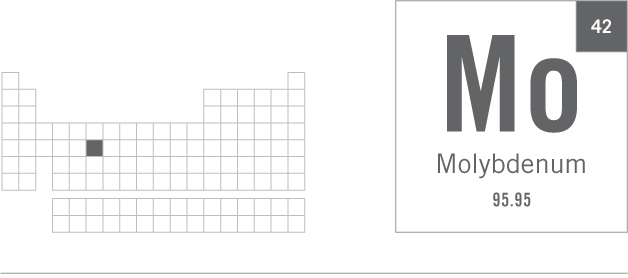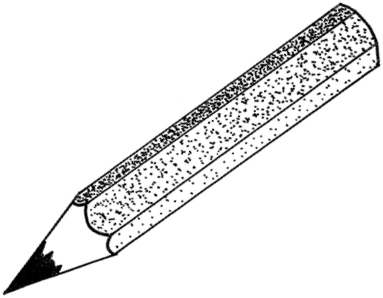For armor-plated tank-tough steel, Mo’s the one, and how!
Need Tc-99m’s rays? Go milk that moly cow!
Helps enzymes detox “grape and grain” . . .

For armor-plated tank-tough steel, Mo’s the one, and how!
Need Tc-99m’s rays? Go milk that moly cow!
Helps enzymes detox “grape and grain” . . .
emm-ohs
GROUP 6 TRANSITION METAL
A prominent use of molybdenum is as a steel additive. The resultant hard-wearing, high-performance, and temperature-resistant moly steel was initially used in armor plating World War I tanks. Currently, it’s found in auto parts, aircraft engine parts, and rocket parts.
tee-see-ninety-nine-emms
Molybdenum-99 (Mo-99) is a radioactive isotope of molybdenum with a half-life of approximately 66 hours. It decays to the metastable form of technetium-99 (Tc-99m), meaning a form of technetium that is temporarily stable but whose nuclei possess excess energy. The nuclei give out this excess energy by emitting gamma rays, and Tc-99m decays to the relatively more stable Tc-99 as a result. Tc-99m has a very short half-life of only six hours but is widely used as a gamma ray emitter in medical diagnostics and radiation therapy. The problem of its short half-life can be overcome. This is done by generating and then extracting it “on demand” from its more long-lasting parent, Mo-99, using an apparatus known as a technetium cow or a moly cow. For more about Tc-99m, see “Technetium, Tc” on page 126.

enn-two
Molybdenum is an essential trace metal for all human, animal, and plant life. It’s present in about 50 enzymes found in animals and plants. One of these enzymes, aldehyde oxidase, resides in the liver. In collaboration with a zinc-containing enzyme, aldehyde oxidase helps detoxify the alcohol in wine and beer by converting it to acetic acid.
Nitrogen-fixing nitrogenase is a second and arguably far more important molybdenum-containing enzyme. It helps certain bacteria in the soil convert nitrogen (N2) in the air to ammonia (NH3). The ammonia is then taken up by the root systems of plants, such as beans, soybeans, and clover, and converted to nitrate. This fixing of atmospheric nitrogen forms part of the nitrogen cycle that helps sustain our living planet.
emm-oh-ess-two
Molybdenum’s name comes from the Greek word molybdos, meaning lead. In the past, the soft, black mineral molybdenite (molybdenum disulfide, MoS2) was often mistaken for a lead-based ore. Like graphite, molybdenite was used in pencils, giving rise to the term “pencil lead,” which still confuses people to this day! Over a range of temperatures and pressures, MoS2 also has excellent lubricant properties.
